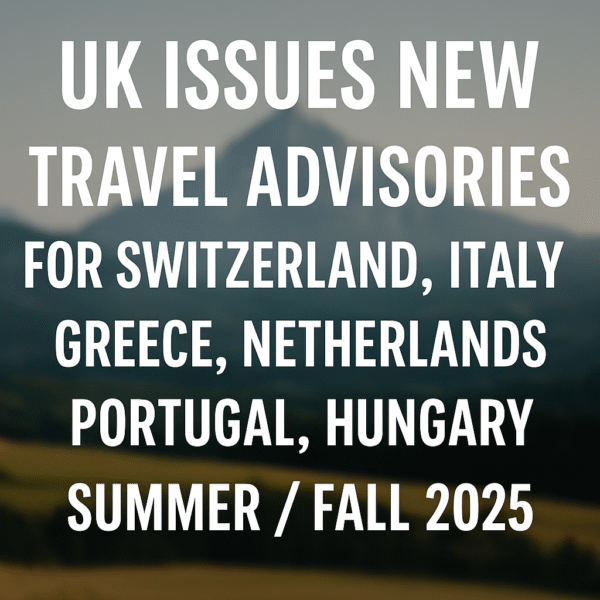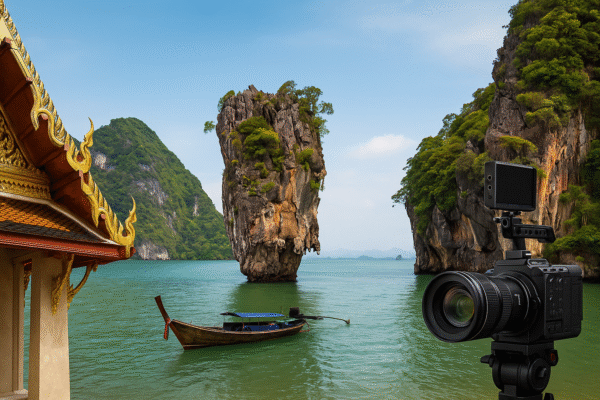Japan has unveiled an ambitious plan to attract 60 million international tourists by 2030, a goal that marks a 50% increase from its current visitor numbers. Already celebrated as one of the world’s top travel destinations, Japan is doubling down on sustainable growth, regional tourism development, and international outreach to achieve this milestone.
The strategy comes at a time when global tourism is rebounding strongly. In the first half of 2025 alone, Japan welcomed 21.5 million international arrivals, a 21% increase compared to the previous year. Officials expect 2025 to close with nearly 40 million visitors, setting the stage for the decade’s long-term target.
Beyond the Golden Route
Japan’s famous “Golden Route”—Tokyo, Kyoto, and Osaka—remains a major draw for tourists worldwide. However, these cities are facing capacity challenges, with crowding affecting both local communities and visitor experiences. To counter this, the Japan Tourism Agency (JTA) is working to shift focus towards regional destinations, encouraging travelers to explore beyond the country’s most popular hotspots.
Destinations like Nikko, located north of Tokyo, embody this vision. A UNESCO World Heritage site, Nikko is known for its ornate shrines, centuries-old temples, and forested mountains. Promoting such locations not only relieves pressure on urban centers but also ensures that rural and lesser-visited areas share in the economic benefits of tourism.
The move towards regional tourism is also designed to preserve Japan’s cultural heritage and reduce the strain on over-visited sites, aligning with global best practices in sustainable tourism.
Focus on High-Value Markets
Japan’s tourism growth strategy is not just about increasing visitor numbers but also about attracting higher-spending, longer-staying travelers. Affluent markets such as the United States, Europe, and Australia have been identified as key targets.
Recent data from 2025 revealed that British visitors ranked as the highest spenders, averaging 444,000 yen (about US$2,983) per person, nearly double the overall average of 239,000 yen. Visitors from Germany, Italy, and Australia are also contributing significantly to Japan’s growing tourism revenue.
By targeting high-value markets, Japan aims to generate not only larger revenues but also stronger cross-cultural exchanges that enhance the global perception of Japan as a luxury and cultural destination.
Infrastructure and Regional Development
To accommodate the expected influx of tourists, Japan is investing heavily in infrastructure upgrades across both urban and regional areas. Improvements include:
- Transportation: Expansion of rail networks and regional airport upgrades to improve access beyond Tokyo and Osaka.
- Accommodation: Encouraging development of boutique hotels, ryokan (traditional inns), and eco-lodges in rural towns.
- Visitor Services: Enhancing multilingual support, digital tourism platforms, and sustainable tour programs.
These initiatives are designed to spread the economic benefits of tourism, ensuring that small towns, coastal areas, and mountain villages also thrive from the boom.
Sustainable Tourism at the Core
One of the central themes of Japan’s 2030 tourism strategy is sustainability. With rising global concern about overtourism, Japan is keen to set an example by balancing growth with preservation.
Efforts include:
- Eco-friendly travel options like low-emission transport and cycling routes.
- Conservation projects in national parks such as Hokkaido and Yakushima.
- Responsible tourism campaigns encouraging visitors to respect local customs, wildlife, and environments.
By embedding sustainability into its tourism framework, Japan aims to ensure that natural landscapes and cultural treasures remain protected while still welcoming millions of visitors.
Japan’s Timeless Appeal
Japan continues to captivate travelers with its unique mix of tradition and modernity. Tokyo dazzles with futuristic skyscrapers and neon-lit districts, while Kyoto offers timeless charm through ancient temples and tea houses.
Beyond these well-trodden paths, Hokkaido draws nature enthusiasts with its ski resorts and flower fields, while Okinawa’s tropical islands invite relaxation with coral reefs and vibrant local culture. This diversity allows Japan to position itself as a year-round destination appealing to all travel segments, from adventure seekers and cultural explorers to wellness travelers and families.
Addressing Overtourism Challenges
Overtourism has strained destinations like Kyoto, where narrow streets and temples face surging visitor numbers. Japan’s strategy seeks to mitigate these pressures by spreading arrivals across seasons and regions.
Initiatives include promoting off-season travel, encouraging visits to second-tier cities like Kanazawa and Fukuoka, and developing themed travel routes such as heritage circuits, culinary trails, and wellness tours. This ensures tourists enjoy authentic experiences while reducing stress on heavily visited areas.
Conclusion: Toward 60 Million Visitors
Japan’s tourism future looks promising. With 21.5 million international visitors in just the first half of 2025 and strong forecasts for the year ahead, the country is well on track to achieving its ambitious 2030 goal.
By focusing on regional development, sustainability, and high-value travelers, Japan is creating a model of growth that benefits both visitors and residents. The journey from Tokyo’s modern skyline to Nikko’s sacred shrines, or from Hokkaido’s wild landscapes to Okinawa’s sandy beaches, reflects the country’s diversity and timeless appeal.
If successful, Japan’s strategy will not only secure 60 million annual visitors by 2030 but also position the nation as a global leader in sustainable tourism—balancing economic growth with the preservation of culture, heritage, and natural beauty.
For more travel news like this, keep reading Global Travel Wire



















